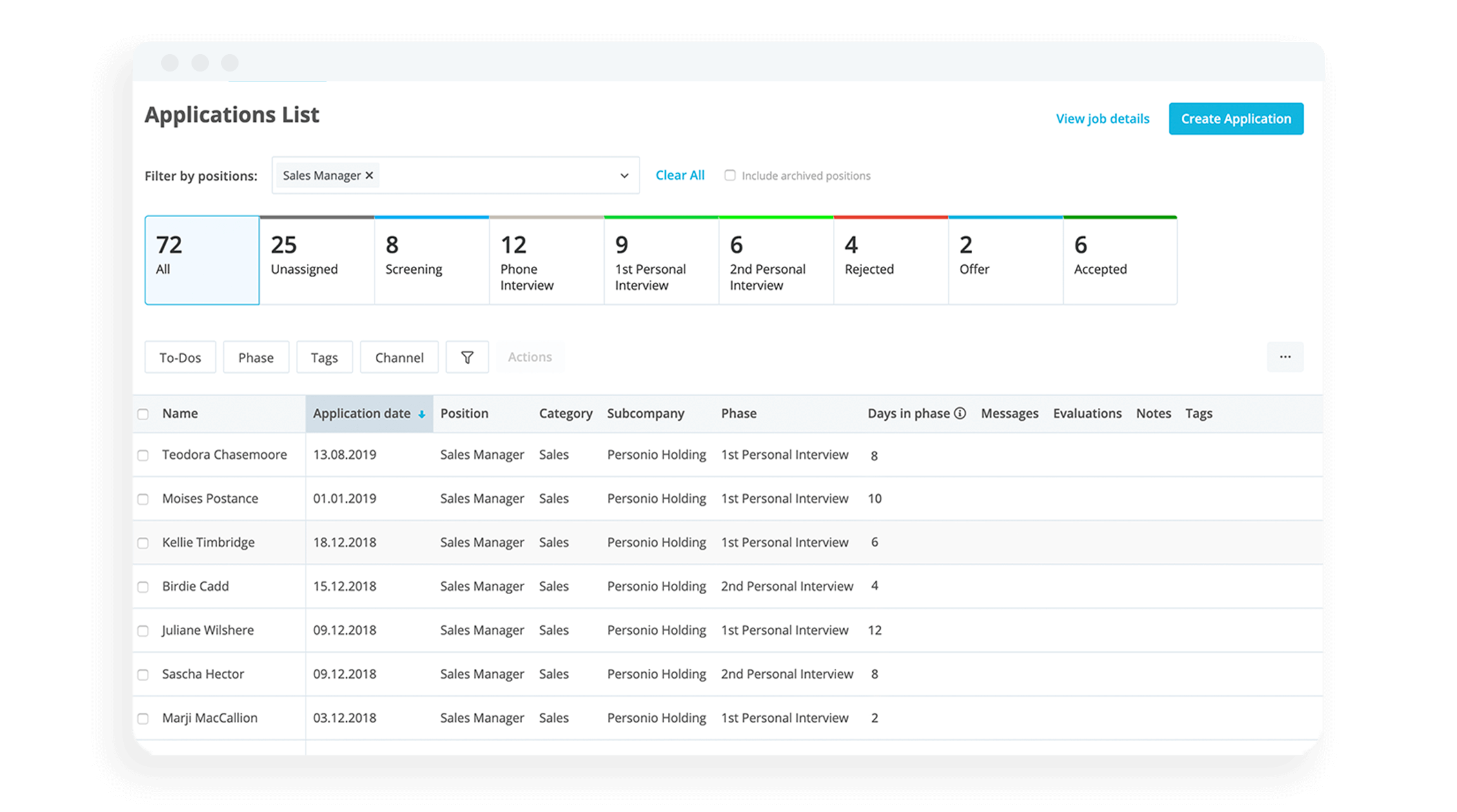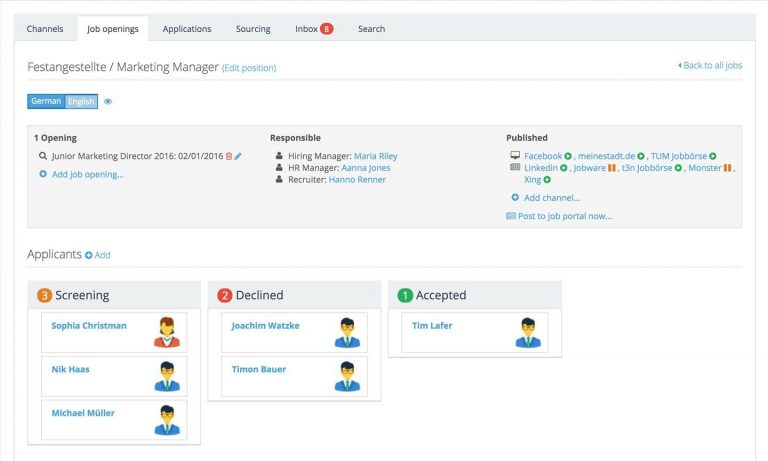What is a hiring freeze? A guide for employers
A hiring freeze is when an organisation stops all hiring activity, either because of external economic factors or an internal driver like a merger or acquisition. While hiring freezes are sometimes necessary, they have a big impact on both employers and employees — so it’s important to understand exactly what a hiring freeze would mean for your organisation.
In this guide, we’ll take you through everything you need to know about hiring freezes, including the reasons behind them, their impact on employees and how you’ll know when you’re ready to start hiring again after a freeze.
Help your organisation become 'Recession Ready.' Download our guide today.What is a hiring freeze?
A hiring freeze is when an organisation temporarily stops hiring new employees. The company ceases all hiring activity and puts a temporary hold on creating new positions or recruiting to fill existing openings. A hiring freeze might be implemented for a set period of time, or put in place indefinitely and stopped only when the underlying reasons behind it have been resolved.
Reasons for implementing a hiring freeze
Some of the most common reasons that an organisation implements a hiring freeze include:
Economic uncertainty
Mergers and acquisitions
Organisational restructuring
Budgetary constraints
National or global emergencies
In each of these situations, a hiring freeze allows an organisation to take stock of its current situation and take the time to fully understand its needs before making hiring decisions.
It also allows organisations to temporarily reduce operational costs, which might be necessary during times of financial instability. Importantly, a hiring freeze can also be a way of preventing layoffs. This means that, while a hiring freeze can be scary for employees, it’s often a way to protect their jobs in the long run.
Types of hiring freeze
There are three distinct types of hiring freezes you need to know:
Full freeze | No hiring of any kind is allowed until the hiring freeze is lifted. |
Partial freeze | Hiring is partly suspended, but some hiring activities continue. For example, an organisation might continue to recruit for business-critical roles. |
Department-specific freeze | Hiring is paused in specific departments. For example, if a company is planning to significantly restructure a certain department, it might implement a department-specific hiring freeze until restructuring occurs. |
Are You Recession Ready?

Preparing for a recession is no small feat. Get ready with three key strategies in our guide.
Download NowImplications of a hiring freeze for employers and employees
For employers
During a hiring freeze, employers need to ensure they’re using their internal resources effectively to avoid impacting business-critical processes. Crucially, they also need to avoid overworking existing employees — which is often an unfortunate side effect of a hiring freeze.
Since hiring freezes naturally cause anxiety among employees, it’s also important to work on maintaining a good level of morale within your existing team. Otherwise, you might see problems with productivity, engagement and retention.
For employees and jobseekers
During a hiring freeze, employees might be forced to take on additional work to compensate for unfilled vacancies. If this isn’t managed properly, it can lead to those employees being overworked, and ultimately burning out.
People who are looking for a job during periods of widespread hiring freezes might also find it more difficult to get hired. This can be frustrating for job seekers and take a toll on their mental health.
The legal side of hiring freezes: What you need to know
Businesses are free to choose when and how they hire new employees. That means you’re free to implement a hiring freeze in your organisation whenever your business requires it.
However, hiring freezes are often a precursor to layoffs, and there are specific rules that employers need to follow if they’re considering redundancies. Since these two concepts often go hand in hand, it’s a good idea to be aware of the rules around compulsory redundancy if you’re thinking about implementing a hiring freeze.
Employment law considerations
Under UK employment law, employers need to follow a set process if they want to make employees redundant. The exact steps vary based on the number of employees that you’re planning to lay off, as well as other factors like how long the employees in question have been at your organisation.
In the case of an employment dispute, one of the things that can work in an employer’s favour is if they can show they considered all possible alternatives before making layoffs… including implementing a hiring freeze.
Furlough schemes
During the pandemic, the UK government put in place a furlough scheme to help companies avoid redundancies. Under the scheme, employers could get a government grant to pay the wages of those employees who were temporarily not working due to the pandemic. Over the 18 months the scheme was in place, 11.7 million jobs were furloughed.
The furlough scheme ended in September 2021, which means that furloughing employees is no longer possible for UK employers. However, it’s an interesting example of a government putting in place an alternative to redundancies during a national emergency.
Navigating a hiring freeze: Strategies for employers
Here are a few tips for managing a hiring freeze as an employer:
Explore alternative staffing solutions: While a hiring freeze means you can’t make new hires, you may be able to access the resources you need in another way. For example, you could look into engaging freelancers, contractors or temporary workers to help you meet your business needs until the freeze is over.
Focus on upskilling existing staff: A hiring freeze can be a good opportunity to work on developing and upskilling your existing employees. Not only can this help you to keep your operations running by building your employees’ skill sets, but it also shows those employees that you value them and want to support them in their career journey.
Communicate clearly and effectively: Hiring freezes can be stressful and scary for employees, who might fear they’re a precursor to upcoming layoffs. The best policy is to be honest about the hiring freeze, why it’s in place and how long you expect it to last. This can help you to build trust with your employees, ultimately improving engagement and morale.
Ending a hiring freeze
If everything goes to plan, there will come a time when you’re ready to restart your hiring efforts. But just like implementing a hiring freeze in the first place is a big decision, ending it will also have a big impact on your organisation. And doing it too early could hurt your business in the long run.
When to lift a hiring freeze
There’s no one right time to restart hiring after a hiring freeze: it will depend on the specifics of your business and the market you’re operating in. However, there are certain key indicators that could signal that it’s time to start hiring again.
For example, if you paused hiring because of an economic downturn, the economy showing signs of recovery could be the signal you need to restart your hiring efforts. Or, if your hiring freeze was a response to internal changes like a restructuring, you might decide to restart hiring once you’re consistently meeting your internal benchmarks.
The important thing is to carefully consider whether it’s the right time to restart hiring — don’t be afraid to extend your hiring freeze if your business isn’t ready.
How to gradually resume hiring
When you do lift your hiring freeze, it’s best to take a gradual approach. If you’re too ambitious, you could end up overwhelming your internal team or going over your hiring budget. Here are some of the key steps you can take to gradually resume hiring after a freeze:
Prioritise key roles: A hiring freeze often makes it very obvious which roles are really critical to your business. While it may still be important to fill other roles in the long run, it’s a good idea to prioritise business-critical roles for your first few hires.
Think carefully about budget allocation: A hiring freeze is an opportunity to reflect on the way you’ve previously allocated your hiring budget. Before lifting your hiring freeze, think carefully about how you can best allocate your funds to get the most value for money.
Develop a communication strategy: As you come out of a hiring freeze, your employees will probably have a lot of questions. You should communicate clearly with them about the issues that led to the hiring freeze and how they have been resolved. You’ll also need to communicate with managers and team leaders to ensure they understand which hires they’ll be able to make in the foreseeable future.
Turn Top Talent Into Your Next Great Hire

Speed up your entire recruiting and hiring process with Personio. See how it works below.
Hiring At Scale With PersonioHire in record time with Personio
A hiring freeze is a temporary pause in an organisation’s recruitment or hiring activity. But if everything goes well, hiring will restart eventually — and it’s important to be prepared for that moment and to move at pace.
Using Personio, you can build tailored career pages and easily create, publish and manage job postings for every opening. You can publish your jobs to over 600 job boards in just a few clicks, and access analytics that tell you which channels are working.
Put simply, Personio lets you manage the entire recruitment process through one central, user-friendly system. Once you find the right person for the job, you can make it official with a legally binding e-sign contract — all through Personio.
Want to learn more about Personio’s recruitment capabilities? Book your demo today.
